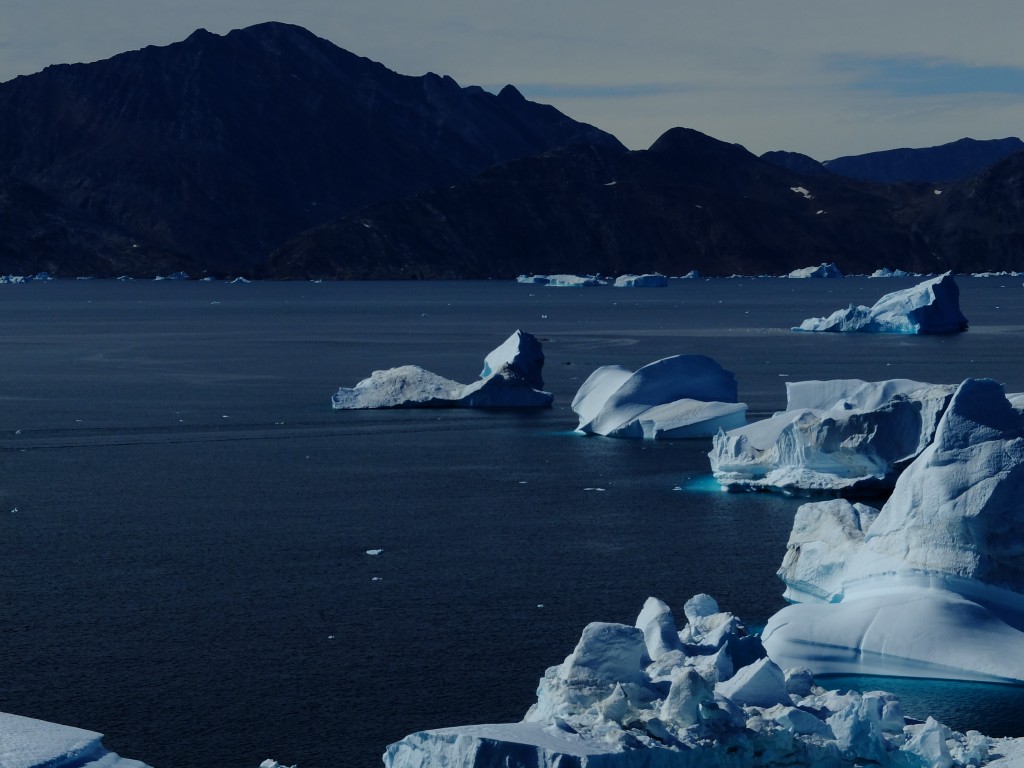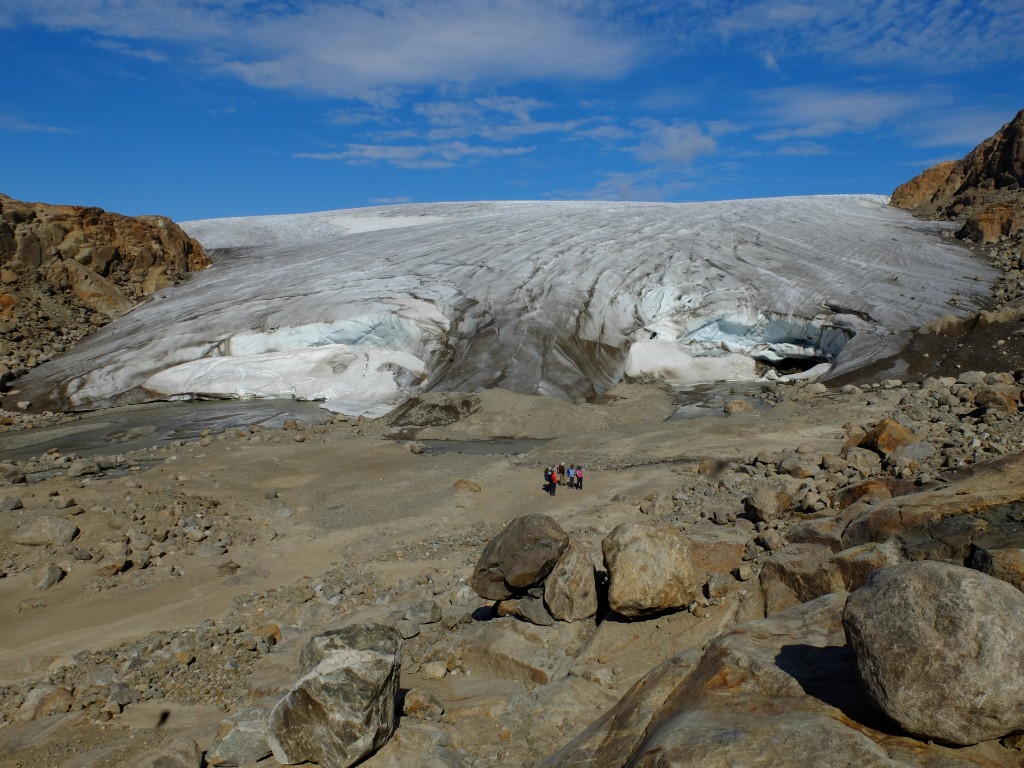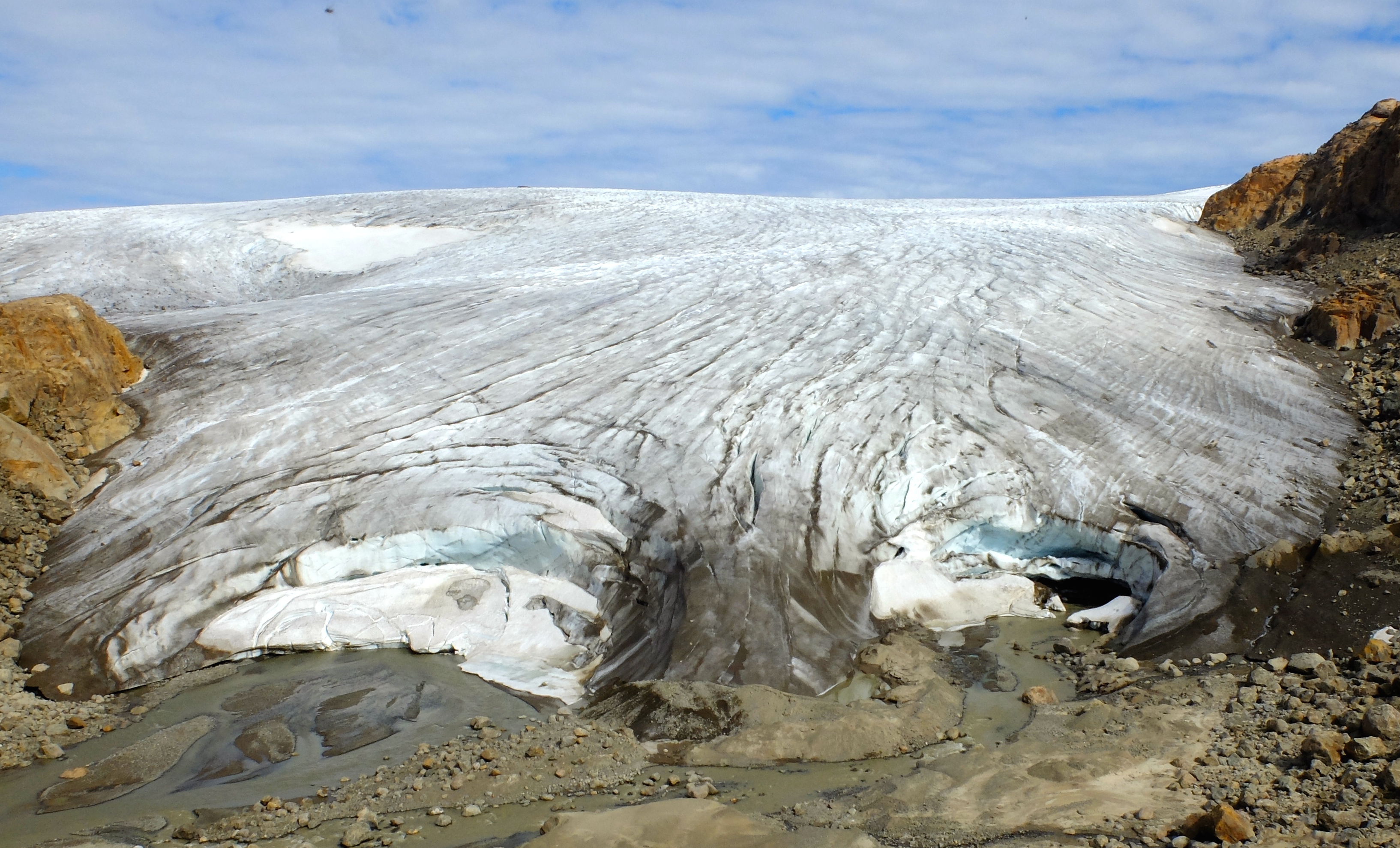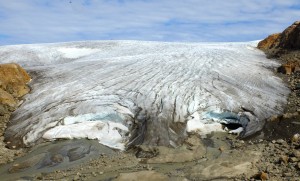After going to Greenland this past August, I had even more questions after seeing Chasing Ice the second time around than I did the first time I saw it. This past week Jim Balog visted Dickinson College to receive the Rose-Walters Prize for Global Environmental Activism and many of us had multiple opportunities to interact with him. What I find most interesting about his work is the questions of scale, which he raises for us. Even after having seen the Greenland ice sheet, I have a hard time visualizing the scale of the ice Balog is photographing.
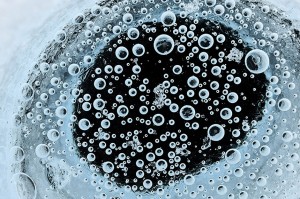
The photo (right) of black dots in ice exemplifies this idea for me. Take a look at it and think to your self: how big are those dots? Once you think you have an idea, click here to explore the Dark Snow project and see some pictures that have those same style of features in them with scales. (Hint: those a very small features, on the order of centimeters).
Even after going to Greenland it is still hard to imagine how massive these glacial features really are. Balog does a nice job of helping his audience visualize this with comparisons to lower Manhattan, the empire state building and the capitol building, yet I still don’t think most people can gain an appreciation for the enormity of the ice. I have included several pictures from my trip to Greenland below with relatively small icebergs with boats in the pictures for scale. Can you see the boats?
If you are interesting in viewing Chasing Ice, see Extreme Ice first, it is free!
